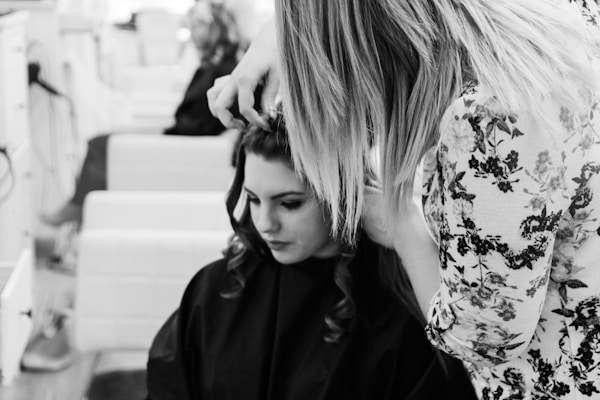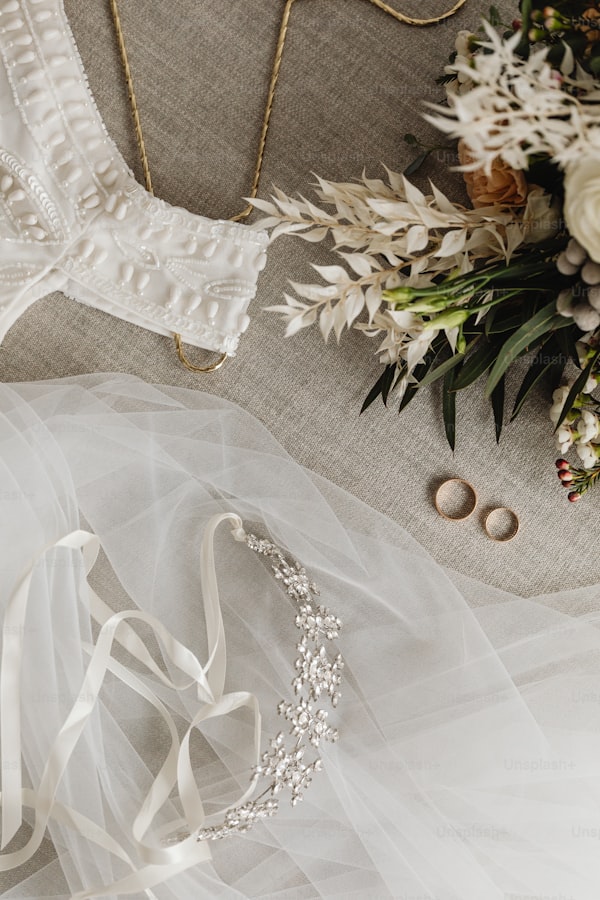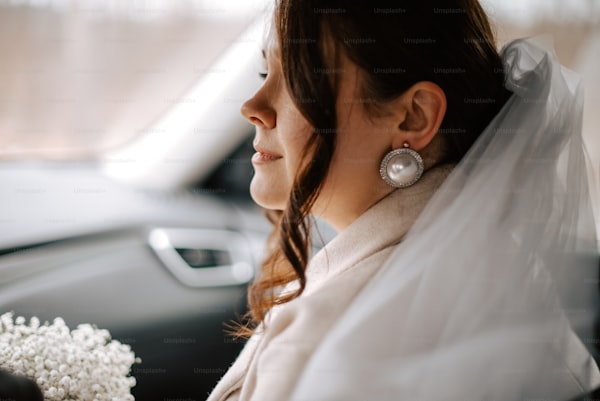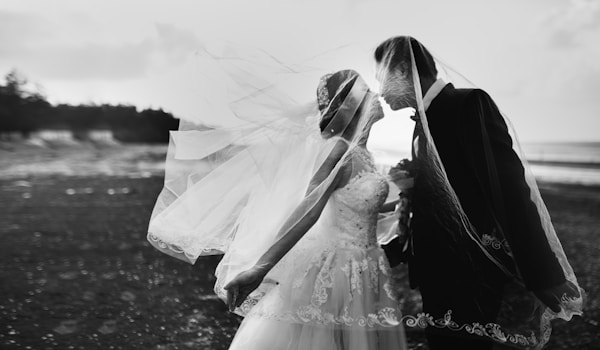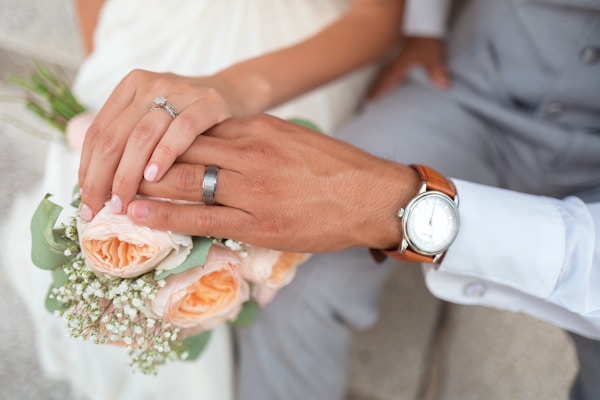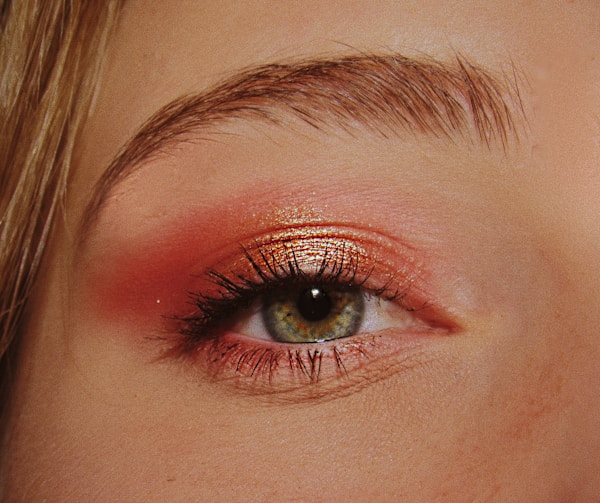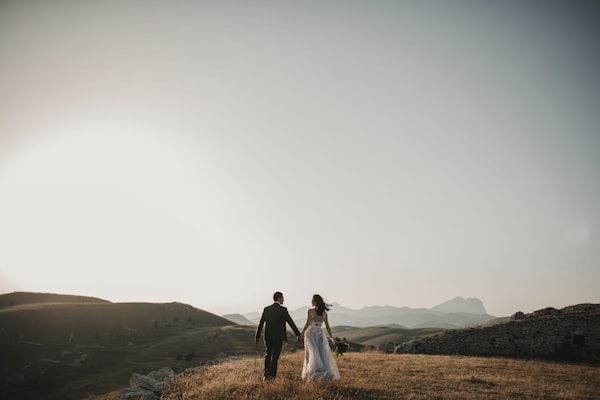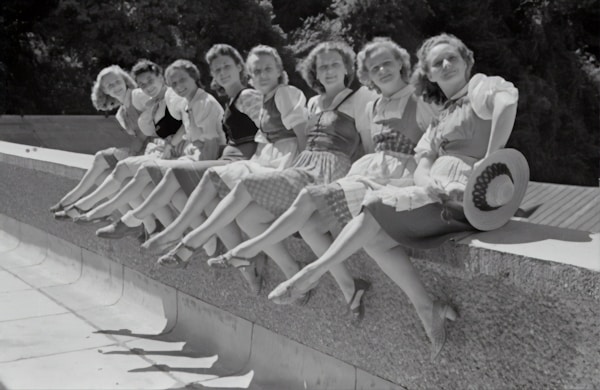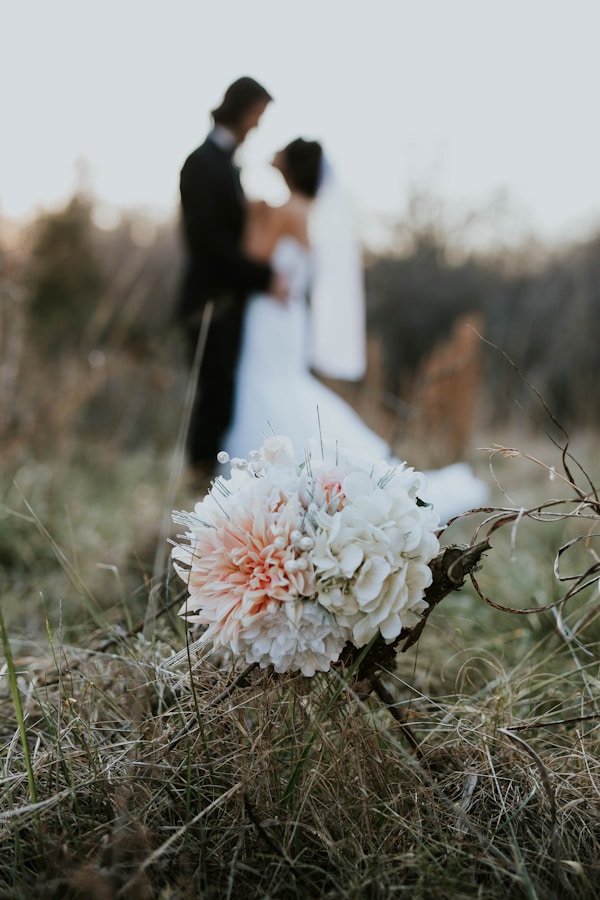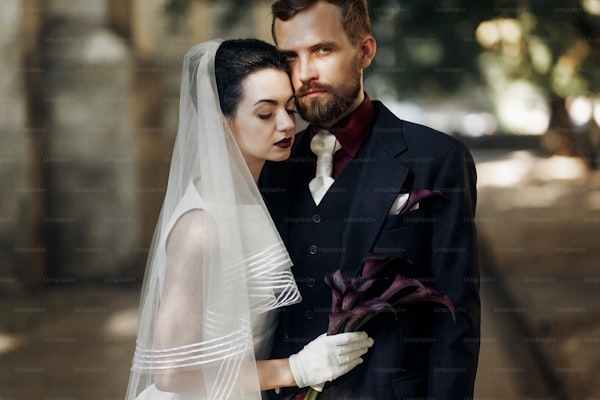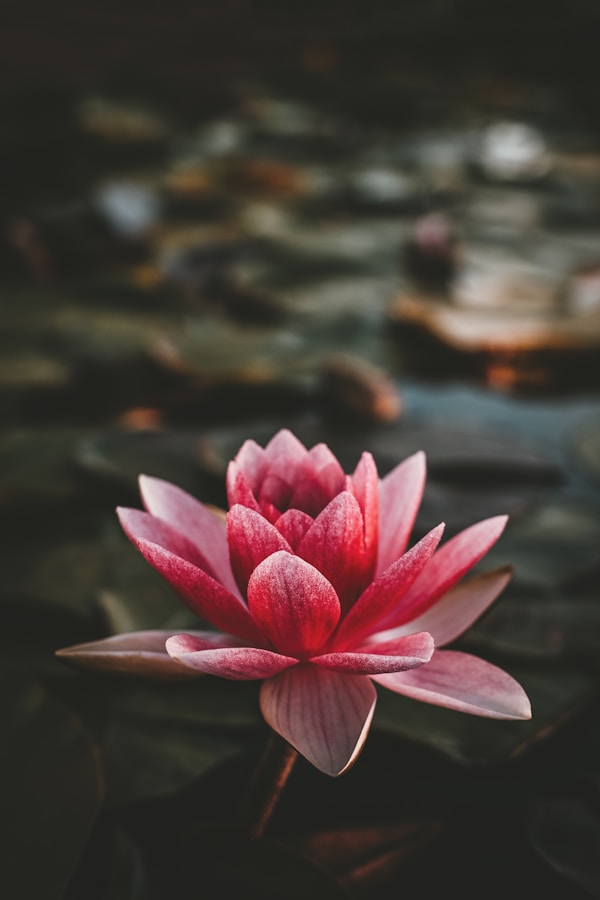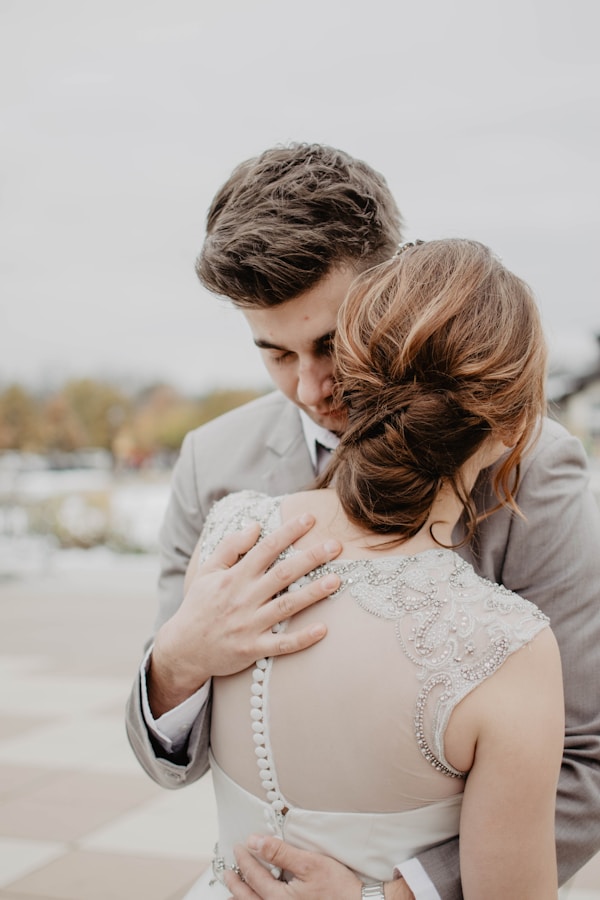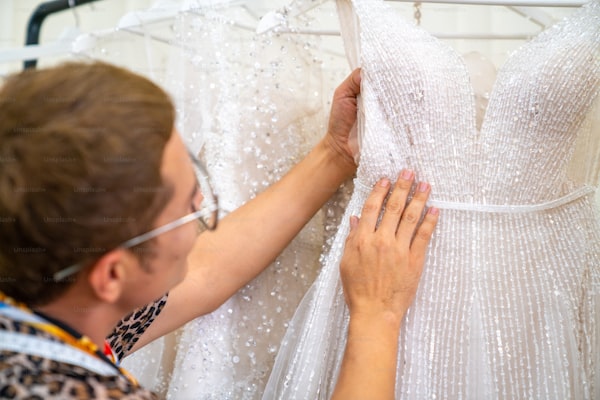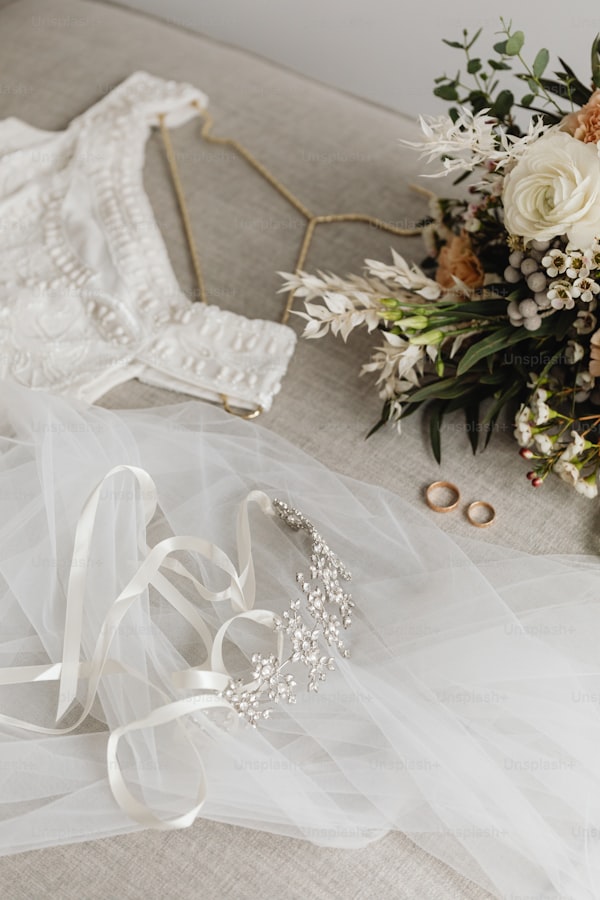Discover the Latest Chic Bridal Hair Trends for 2023
Introduction to Chic Bridal Hair TrendsYour wedding day is one of the most important events in your life, and every detail counts. One of the most significant elements of your bridal look is your hairstyle. In 2023, chic bridal hair trends have taken center stage, offering brides a plethora of stylish options that range from classic elegance to modern flair. This article delves into the latest trends, provides styling tips, and answers some frequently asked questions to help you choose the perfect hairstyle for your special day.Current Chic Bridal Hair TrendsThe world of bridal hairstyling is ever-evolving, with new trends emerging each season. Here are some of the most sought-after chic bridal hair trends for 2023:TrendDescriptionEffortless WavesSoft, beachy waves create a relaxed yet sophisticated look, perfect for outdoor weddings.Textured UpdosMessy buns or intricate updos with volume and texture add an element of romantic elegance.Half-Up, Half-Down StylesThis versatile option combines elegance and ease, ideal for brides wanting to showcase their hair while keeping it off their face.Braided AccentsIncorporating braids into your hairstyle adds a touch of whimsy and bohemian charm.Floral EmbellishmentsNatural flowers or floral hairpins can elevate your bridal look, reflecting the beauty of your wedding theme.Sleek PonytailsA high, sleek ponytail exudes confidence and contemporary style, perfect for modern brides.Styling Tips for 2023 Bridal LooksChoosing the right hairstyl...
Exploring Classic Bridal Attire Options: Timeless Choices for Every Bride
Introduction to Classic Bridal Attire OptionsWhen it comes to one of the most important days in a woman's life, choosing the perfect wedding dress is paramount. Classic bridal attire options not only reflect personal style but also hold cultural significance, embodying traditions that have transcended generations. This article delves into the timeless choices for bridal attire, exploring various styles, fabrics, and accessories that stand the test of time. Whether a bride is seeking something elegant, vintage, or modern with a classic twist, there is a plethora of options available. Understanding Classic Bridal StylesClassic bridal attire typically encompasses styles that have remained popular over numerous years. These looks emphasize elegance and sophistication, ensuring that brides look stunning on their special day. Here are the significant styles to consider:The A-Line GownThe A-Line gown is a staple in the world of bridal fashion. Its fitted bodice and flowing skirt create an hourglass silhouette that flatters various body types. A-Line gowns are often made from luxurious fabrics such as satin or chiffon, and they can range from simple to elaborately adorned, making them a versatile choice.The Ball GownFor brides dreaming of a fairy-tale wedding, the Ball Gown is the ultimate classic choice. With a fitted bodice and voluminous skirt, this style is reminiscent of royal weddings and glamorous events. Ball gowns can be enhanced with elaborate lace, beading, or tulle for a...
The Evolution of Bridal Style: A Timeless Journey Through the Decades
Understanding Bridal Style EvolutionThe concept of bridal style has transformed dramatically over the years, reflecting changes in culture, fashion, and societal norms. From the elegant dresses of the 1920s to the modern, eclectic ensembles of today, the evolution of bridal style mirrors our shifting ideals of beauty and individual expression. This article explores the journey through various eras, highlighting significant trends, influential figures, and the factors that have shaped bridal aesthetics over time.The Early Years: Tradition Meets SimplicityIn the early 20th century, bridal attire was often characterized by traditional elements. The Victorian era had a significant influence on wedding garments, which typically featured long sleeves, high necklines, and voluminous skirts. Lace, tulle, and silk were popular materials that added a touch of elegance to bridal ensembles.1920s: The Rise of the Flapper BrideThe 1920s marked a revolutionary shift in bridal fashion, inspired by the flapper movement. Brides began to embrace a more liberated style, opting for shorter hemlines and less restrictive silhouettes. The iconic bride of this era often wore a dress adorned with intricate beading and embellishments, channeling the glamour of the Jazz Age. Popular figures like Coco Chanel influenced modern designs, promoting a more relaxed yet sophisticated bridal look.Bridal Trends of the 1920sShorter HemlinesLess Restrictive SilhouettesIntricate Beading and EmbellishmentsInfluence o...
Ultimate Guide to Luxury Wedding Budget Tips
Planning the Perfect Luxury Wedding Without Breaking the BankA luxurious wedding is a dream for many couples, but the reality of the costs can lead to stress and anxiety. However, with the right wedding budget tips, you can plan a stunning event that reflects your personal style and remains financially responsible. In this article, we will delve into crucial strategies for managing a luxury wedding budget effectively while still ensuring a memorable celebration.Understanding the Components of a Luxury Wedding BudgetBefore we dive into the tips for managing your luxury wedding budget, it's essential to understand what constitutes a luxury wedding. Here are the critical components that typically contribute to the overall costs:ComponentAverage CostVenue$10,000 - $20,000Catering$70 - $200 per guestPhotography/Videography$5,000 - $10,000Wedding Dresses and Attire$2,000 - $15,000Flowers and Decor$2,000 - $10,000Entertainment$1,500 - $10,000Wedding Planner$2,000 - $10,000As you can see, costs can vary dramatically based on preferences and choices. Therefore, having a well-defined budget is vital.Top Luxury Wedding Budget Tips1. Set a Realistic BudgetThe first step in planning your luxury wedding is setting a well-defined budget. Start by determining how much total money is available for your wedding. Include contributions from both families, savings, and any loans if necessary. Once you have this figure, divide it among various categories (venue, catering, attire, etc.). This will ...
The Ultimate Guide to Bridal Gown Care Instructions
Preserving Your Bridal Gown: Essential Care InstructionsYour wedding day is one of the most memorable days of your life, and your bridal gown plays a central role in that celebration. Ensuring that your dress remains in pristine condition before, during, and after the wedding is crucial. In this comprehensive guide, we will explore bridal gown care instructions, helping you understand how to maintain the beauty and integrity of your gown.Understanding Your Bridal Gown FabricBefore diving into specific care instructions, it's imperative to know the fabric of your bridal gown. Each fabric type comes with its own set of care requirements. Here are some common bridal gown fabrics:FabricCare InstructionsSatinDry clean only; avoid water stains.OrganzaLightly steam to remove wrinkles; avoid heavy fabrics.LaceHand wash with cold water; air dry flat to prevent distortion.TulleSpot clean; store away from direct sunlight to prevent fading.Pre-Wedding Care: Preparing for the Big DayTo ensure your bridal gown is in top shape for your wedding, follow these essential care instructions:1. Proper Storage Before the WeddingWhen you receive your gown, make sure to store it correctly:Keep the gown in a breathable garment bag to avoid moisture buildup.Store it in a cool, dark place to prevent discoloration.Hang the gown from the bust area to avoid stretching the fabric.2. Final Fitting and AdjustmentsSchedule your final fitting about two weeks before the wedding. This will allow enough time for a...
Unlocking the Secrets: Unique Bridal Styling Advice for Every Bride
Your Big Day Deserves Unique Bridal StylingWhen it comes to planning your wedding, every detail matters, and your bridal styling is no exception. As a bride, you want to look your absolute best on this momentous occasion, and unique bridal styling advice can help you achieve that stunning, personalized look that reflects your individual style. In this article, we will explore various aspects of bridal styling, including hair, makeup, accessories, and more, ensuring that your bridal look is not only beautiful but also uniquely yours.Understanding Your Personal StyleBefore diving into the specifics of bridal styling, it's essential to understand your personal style. Are you a classic bride who prefers timeless elegance, or do you lean towards a more modern, eclectic look? Perhaps you envision a bohemian vibe or a glamorous Hollywood-inspired theme. Identifying your style will help guide your decisions as you prepare for your wedding.Tips to Identify Your Personal StyleExplore inspiration: Look through bridal magazines, social media platforms like Pinterest and Instagram, and wedding blogs to find looks that resonate with you.Consider your personality: Think about what makes you feel confident and beautiful. Choose styles that enhance those features.Dress for the venue: The location of your wedding can influence your style. A beach wedding may call for a flowy dress, while a formal ballroom event might suit a structured gown better.Bridal Hair: Crafting Your Signature LookYour w...
The Ultimate Guide to Personalized Wedding Invitations: Make Your Big Day Unique
Why Choose Personalized Wedding Invitations?Planning a wedding is one of the most exciting yet challenging experiences of a couple's life. Among the countless decisions you’ll face, choosing the right personalized wedding invitations stands out as a crucial task. These invitations not only convey the details of your big day but also set the tone for the celebration ahead. In this article, we will dive into the reasons why personalized wedding invitations are essential, how to create them, and the latest trends in the industry.The Importance of Personalized Wedding InvitationsYour wedding invitation is the first impression your guests will have of your wedding. A personalized invitation showcases your style, love story, and the theme of your event. Here are several reasons why you should consider personalized wedding invitations:Uniqueness: Unlike generic invitations, personalized options reflect your individual taste.Storytelling: Use your invitation to narrate your love story or the theme of your wedding, making it memorable.Guest Connection: Tailoring invitations can make your guests feel valued and special.Enhanced Presentation: Beautifully designed invitations enhance the overall aesthetic and excitement of your wedding.How to Create Your Personalized Wedding InvitationsCreating personalized wedding invitations can be a fun and fulfilling process. Here’s a step-by-step guide to help you design the perfect invitation that reflects both your personality and the theme of you...
10 Elegant Bridal Jewelry Ideas to Elevate Your Wedding Look
Your wedding day is one of the most important occasions in your life, and every detail matters, especially your bridal jewelry. The jewelry you choose not only complements your wedding dress but also reflects your personal style. In this article, we’ll explore some of the most elegant bridal jewelry ideas that can enhance your look and add a spark of glamour to your big day.1. Timeless Pearl JewelryPearls are a classic choice for bridal jewelry, symbolizing purity and elegance. A simple pearl necklace paired with matching earrings can create a stunning look without overwhelming your outfit. Consider selecting vintage pearl pieces to add a touch of nostalgia to your bridal ensemble.2. Dazzling Diamond AccentsDiamonds are a bride's best friend, and for a good reason! They offer unmatched brilliance and can elevate your wedding ensemble. Whether you choose a delicate diamond necklace, a pair of chandelier earrings, or a statement bracelet, diamonds add a touch of luxury that every bride desires.Popular Diamond ShapesRoundOvalPearEmeraldPrincessWhen selecting diamonds, consider the cut and shape that best fits your personal style. Don’t forget about adding some diamond-encrusted hairpieces for that extra sparkle!3. Vintage-Inspired Heirloom JewelryMany brides opt for vintage or heirloom jewelry pieces that have been passed down through generations. Not only do they provide a unique touch, but they also carry sentimental value. Choose brooches, necklaces, or bracelets that your fa...
Couture Bridal Trends 2024: A Comprehensive Guide to the Hottest Wedding Styles
Introduction to Couture Bridal Trends 2024As we step into the exciting world of 2024, brides around the globe are on the hunt for the latest couture bridal trends. This year promises to blend classic elegance with modern aesthetics, offering a range of choices for brides who wish to express their unique style on their special day. From luxurious fabrics to innovative silhouettes, the trends in bridal couture will reflect individuality and creativity.Key Couture Bridal Trends for 2024As we explore the couture bridal trends for 2024, we see several themes emerging that define this year’s most sought-after styles. The following table summarizes the key trends:TrendDescriptionBold ColorsBrides are moving away from traditional white and cream, embracing colors like blush, deep green, and even pastels.Statement SleevesFrom puff sleeves to dramatic long sleeves, statement sleeves are making a strong comeback.Minimalist StylesSleek, clean designs with a focus on tailoring highlight the beauty of simplicity.Mix-and-Match EnsemblesBrides are opting for outfits that allow personalisation, combining tops and skirts for a unique look.Luxurious FabricsSilk, satin, and lace with intricate detailing are especially prevalent in this year’s collections.Short DressesFrom rehearsal dinners to city hall ceremonies, chic short dresses are gaining popularity.Eco-Friendly DesignsSustainable fabrics and practices are increasingly important for eco-conscious brides.Embracing Bold ColorsThis year, bold...
Discover the World of High-Fashion Wedding Accessories: Elevate Your Special Day
Unlocking the Elegance of High-Fashion Wedding AccessoriesWeddings are not just about vows and celebrations; they are also about style and elegance. One of the most significant aspects of a wedding is the bridal accessories that complement the wedding gown. High-fashion wedding accessories can transform an ordinary look into an extraordinary one, making the bride stand out on her special day. In this article, we will delve into the world of high-fashion wedding accessories, exploring the latest trends, must-have items, and tips on how to choose the perfect pieces.What are High-Fashion Wedding Accessories?High-fashion wedding accessories encompass a wide array of items that enhance the overall look of the bride. This includes:HeadpiecesJewelryBagsShoesBridal veilsThese accessories not only complement the bridal gown's aesthetic but also add a personal touch, reflecting the bride's unique style. Let's explore each category in detail.The Latest Trends in High-Fashion Wedding AccessoriesFashion evolves continually, and so do wedding accessories. This year, several trends have emerged within the high-fashion realm that brides are eager to adopt. Here are a few key trends to consider:Statement HeadpiecesHeadpieces are no longer just delicate tiaras. Modern brides opt for bold and elaborate designs made of intricate beadwork, floral accents, or even feathers. A statement headpiece can serve as the focal point of your wedding look.Contemporary JewelryBridal jewelry is becoming more d...
Mastering Modern Wedding Guest Attire: A Comprehensive Guide
When it comes to attending weddings, the attire of the guests is as important as the couple’s outfits. The modern wedding guest attire has evolved significantly, reflecting current trends, cultural influences, and the personal styles of individuals. This article delves deeply into everything you need to know about dressing for a modern wedding, ensuring you look stylish while respecting the couple's special day.Understanding the Dress CodeYour first step to mastering modern wedding guest attire is understanding the dress code. Most invitations will indicate the dress code, which can range from casual to black tie. Below is a comprehensive table explaining various dress codes and what they typically entail:Dress CodeDescriptionCasualLightweight and comfortable clothing such as sundresses or smart casual outfits. Think cotton, linen, and soft fabrics.Semi-formalA step above casual, this involves cocktail dresses for women and suit attire for men, possibly with ties.FormalLong dresses for women and dark suits or tuxedos for men are standard for formal weddings.Black TieThis requires women to wear formal gowns and men to be in tuxedos. The level of elegance is high.Black Tie OptionalThis allows for flexibility, where men can choose to wear a dark suit instead of a tuxedo, while women can opt for a cocktail dress or formal gown.Fabric Choices for Modern WeddingsThe fabric of your choice is crucial in achieving the right modern wedding guest attire. Light and breathable materials a...
Ultimate Guide to Luxury Bridal Florals: Elevate Your Wedding Aesthetics
Introduction to Luxury Bridal FloralsWhen it comes to planning a wedding, every detail counts, and few elements are as impactful as luxury bridal florals. These exquisite floral arrangements can transform your wedding venue into a breathtaking setting that mirrors your love story. From lush centerpieces to delicate bouquets, luxury bridal florals embody elegance and sophistication, enhancing the overall bridal experience. In this article, we will explore various aspects of luxury bridal florals, including current trends, popular styles, and tips for selecting the perfect arrangements for your special day.Understanding Luxury Bridal FloralsLuxury bridal florals refer to high-end floral arrangements that often feature premium flowers, intricate design, and personalized touches. These arrangements are not only visually stunning, but they also convey a sense of style and opulence. Factors that contribute to the luxury of bridal florals include: Quality of flowers: Think rare varieties like peonies, gardenias, and orchids. Design complexity: Unique arrangements that showcase the artistry of the florist. Personalization: Tailoring the arrangements to reflect the couple's taste and wedding theme.Current Trends in Luxury Bridal FloralsTo keep your wedding floral arrangements fresh and modern, it's essential to stay abreast of the latest trends in luxury bridal florals. Here are some trends to consider: Bold Colors: Vibrant hues like deep reds and royal blues are gaining p...
Creating the Perfect Romantic Bridal Flower Arrangements
Introduction to Romantic Bridal Flower ArrangementsWhen it comes to weddings, flowers play an integral role in setting the mood and highlighting the couple's unique style. Romantic bridal flower arrangements are not just about aesthetics; they evoke emotions and create lasting memories. Whether you envision a classic look with roses or a modern feel with wildflowers, the right floral choices can transform your wedding day into a fairy tale.Understanding the Concept of Romantic Floral ArrangementsRomantic bridal flower arrangements often incorporate soft colors, lush textures, and a sense of natural beauty. These arrangements can range from elegant bouquets to elaborate centerpieces, each playing a significant role in the decor. Here, we will delve deeper into the types, styles, and trends surrounding these beautiful floral designs.Types of Romantic Bridal Flower ArrangementsTypeDescriptionClassic BouquetsTypically made with traditional flowers like roses, peonies, and lilies, often in soft pastel shades.Wildflower BouquetsUtilize a variety of wildflowers for a more rustic, natural feel, often incorporating greenery and seasonal blooms.Loose and Airy ArrangementsCharacterized by a more casual style, these arrangements often have a whimsical feel and feature various flower types.Floral CrownsA trendy option for brides who want a bohemian look, often made with smaller blooms or greenery.Key Flowers for Romantic Bridal ArrangementsChoosing the right flowers is crucial for creatin...
Unique Wedding Centerpiece Ideas: Elevate Your Special Day
When it comes to weddings, every detail counts, and one of the most significant elements of your reception is the centerpiece. A unique wedding centerpiece can turn an ordinary table into a beautiful, memorable part of your celebration. In this article, we will explore various unique wedding centerpiece ideas that will make your guests say "wow" and ensure that your special day is as unforgettable as it should be.Why Unique Centerpieces MatterCenterpieces set the tone for your wedding and can reflect your personality as a couple. Whether you prefer romantic, rustic, or modern styles, unique wedding centerpieces can enhance the ambiance of your venue. They also serve as conversation starters among guests, creating a more interactive and enjoyable atmosphere.1. Seasonal Floral ArrangementsUsing seasonal blooms not only adds a touch of nature but also keeps your costs down. For example, a spring wedding could feature vibrant tulips and peonies, while a winter wedding could showcase elegant white lilies and deep red roses. Incorporate local flowers to provide a unique touch that aligns with your wedding theme.2. Creative ContainersThink outside the box when it comes to the containers you choose for your centerpieces. Use items like vintage crates, glass terrariums, or even painted mason jars filled with flowers and greenery. These elements not only offer a unique aesthetic but also can be reused in your home after the wedding.Container IdeaStyleBest ForVintage CratesRusticOutdoor...
The Ultimate Guide to Bridal Party Outfit Coordination: Tips, Trends, and More
Understanding the Importance of Bridal Party Outfit CoordinationThe bridal party plays an essential role in any wedding, serving as the support system for the bride on her special day. One of the crucial components of a successful bridal party is outfit coordination. This guide will explore various aspects of bridal party outfit coordination, including tips for coordinating outfits, popular trends, and considerations for different styles and themes.Why Bridal Party Outfit Coordination MattersCoordinating outfits for the bridal party enhances the aesthetic of the wedding while ensuring that the bride and her attendants present a cohesive look. Here are a few reasons why it matters: Aesthetic Appeal: Coordinated outfits create beautiful, harmonious visuals in photos. Reflects Theme: Matching outfits can resonate with the wedding's theme, whether it's rustic, elegant, or bohemian. Unity and Support: A uniform look symbolizes solidarity among the bridal party, making the occasion feel more special.How to Coordinate Bridal Party OutfitsCoordinating outfits doesn't mean everyone wears the same dress. Here are some effective tips for achieving that perfect bridal party look:1. Select a Color PaletteChoosing a color palette is essential for creating a cohesive look. Popular choices include: Pastels: Soft colors that evoke a romantic feel. Classic Neutrals: Whites, creams, or grays that provide a timeless look. Bold Hues: Vibrant colors can add excitement to your we...
Crafting the Perfect Personalized Wedding Menus: Your Ultimate Guide
Introduction to Personalized Wedding MenusIn the realm of wedding planning, every detail counts, especially when it comes to catering. One major aspect that can elevate the dining experience at your wedding reception is the personalized wedding menu. A well-designed menu not only showcases the culinary choices but also reflects the couple's personality and theme of the event. This article will delve into the importance of personalized wedding menus, tips for creating them, and how they can enhance your special day.The Significance of Personalized Wedding MenusYour wedding day is one of the most important occasions in your life. A personalized wedding menu serves as a creative expression of who you are as a couple. It engages your guests and sets the tone for the dining experience. Here are a few reasons why personalized menus are significant: Reflects Your Style: Menus can be designed to align with your wedding theme, color scheme, or even favorite cuisines. Engagement: Guests often appreciate the thought put into personalized menus, making them feel special and included. Souvenir: A beautifully crafted menu can double as a keepsake for guests, reminding them of the special day.Designing Your Personalized Wedding MenuThe design process can be both fun and fulfilling. Here are some steps to help you create a stunning personalized wedding menu:Step 1: Choose the StyleConsider the overall theme and color palette of your wedding. Whether you opt for a classic, rustic, or...
Couture Wedding Dress Alterations: The Key to a Perfect Fit for Your Special Day
Understanding Couture Wedding Dress AlterationsWhen it comes to planning the perfect wedding, one of the most crucial aspects is finding the ideal wedding dress. For many brides, this means opting for a couture wedding dress, which is handcrafted and often custom-made to fit a specific body type. However, even the finest couture gowns may require some level of alterations to ensure a flawless fit. In this article, we will delve into the world of couture wedding dress alterations, exploring why they are necessary, what to consider during the process, and how to find the right tailor for your needs.Why Are Alterations Necessary?Even after meticulous measurements and fittings, couture wedding dresses may still require alterations for several reasons:Body Changes: Brides can experience changes in body shape due to various factors such as weight loss/gain, muscle tone variations, or even pregnancy. Frequent alterations help retain the dress's beautiful silhouette.Design Adjustments: A bride may want to modify the design of her dress, such as changing neckline styles, sleeve lengths, or adding/removing elements like lace or beading.Personal Comfort: Beyond aesthetics, ensuring the dress fits comfortably is essential for a bride to enjoy her special day without worry.Common Alterations for Couture Wedding DressesAlterations can range from simple adjustments to more complex modifications. Here are some of the most common alterations brides typically request:Alteration TypeDescription...
Ultimate Guide to Couture Wedding Dress Preservation: Expert Tips for Cherishing Your Treasured Gown
The Importance of Couture Wedding Dress PreservationYour wedding day is one of the most significant moments in your life, making your couture wedding dress a priceless keepsake. However, preserving this delicate garment can be a daunting task. In this comprehensive guide, we will explore the vital steps and techniques for couture wedding dress preservation, ensuring that your gown remains as beautiful as the day you wore it. Let's delve into the essential elements of preserving your cherished piece and why it matters.Understanding Couture Wedding DressesCouture wedding dresses are handcrafted pieces created by top designers, often made from luxurious fabrics and adorned with intricate details. Due to their delicate construction and the materials used, these dresses are more susceptible to damage from environmental factors, stains, and wear over time. Hence, proper preservation techniques are crucial to maintain their elegance and integrity.Why is Preservation Necessary?Preserving your couture wedding dress is not just about keeping it safe; it allows you to cherish the memory of your special day for years to come. Here are some reasons why preservation is essential: Protects Against Damage: Environmental factors like sunlight, moisture, and dust can wreak havoc on delicate fabrics. Proper preservation shields your gown from these elements. Maintains Resale Value: If you ever decide to sell or pass down your dress, a well-preserved gown can maintain its value significant...
Unforgettable Bridal Gown Shopping Experiences: Your Ultimate Guide
Discovering the Magic of Bridal Gown ShoppingShopping for a bridal gown is one of the most exciting and memorable experiences for any bride-to-be. The journey to find that perfect dress can be filled with emotions, anticipation, and, of course, a few challenges. In this article, we will explore various aspects of bridal gown shopping experiences, provide you with practical tips, and highlight what to expect during this special time in your life.The Importance of Choosing the Right Bridal GownA bridal gown is not just a dress; it represents the bride's personality, style, and the theme of the wedding. Choosing the right gown can make a significant difference in how a bride feels on her big day. With that in mind, let's delve into the essential elements that contribute to a memorable bridal gown shopping experience.Start with ResearchBefore heading to the bridal boutiques, doing some research is critical. Look for gown styles that resonate with you, whether it's a classic ball gown, an elegant mermaid silhouette, or a bohemian lace dress. Use platforms like Pinterest or Instagram to save images of gowns you love, and consider creating a mood board that reflects your wedding theme and style.Setting a BudgetBefore setting foot in any bridal shop, it's essential to establish a budget. Bridal gowns can range significantly in price, so knowing how much you are willing to spend will help narrow your options. It's wise to consider additional costs such as alterations, accessories, and...
Transform Your Dream Wedding with Expert Bridal Gown Alteration Services
Introduction to Bridal Gown Alteration ServicesYour wedding day is one of the most significant moments in your life, and undoubtedly, your bridal gown is one of the most important elements that contributes to your dream wedding. To ensure that your gown fits you perfectly, bridal gown alteration services are essential. This article explores everything you need to know about these services, the importance of alterations, and how to choose the right alteration service for your special day.The Importance of Bridal Gown AlterationsBridal gowns are often purchased off-the-rack, meaning they are designed and manufactured in standard sizes. However, every bride has a unique body shape and style preference. Here are some reasons why bridal gown alterations are crucial: Perfect Fit: A well-fitting gown enhances your appearance and boosts your confidence. Style Customization: Alterations allow you to personalize your gown, making it uniquely yours. Comfort: Proper alterations can ensure that you move freely and comfortably on your big day. Professional Appearance: Tailored gowns have a polished, elegant look that enhances your wedding day aesthetic.Types of Bridal Gown Alteration ServicesBridal gown alteration services can vary widely depending on the specific needs of the bride. Here are some common types of alterations: Type of Alteration Description Hemline Adjustments Shortening or lengthening the dress to match the bride’s height...
